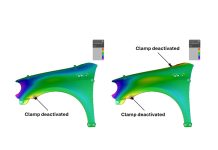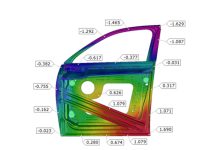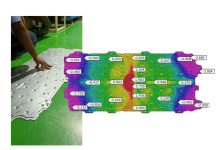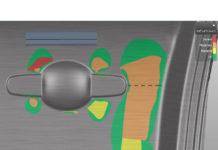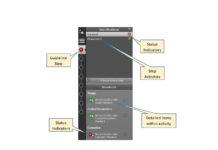Achieving the highest possible quality with reduced time-to-market and reduced costs has always been the goal of the automotive industry and, because of competition; this “concept” has been taken to the limit. Sheet metal forming is one of the areas where a lot of progress has been made during the past decades, and the importance of “generic” CAD software programs has been crucial to that progress.
Different types of generic CAD programs that help designers turn ideas and initial drafts of car parts into full-scale digital representation can be found in today’s market. Objects generated using “generic” CAD principles can quickly be translated into the data required by machines that create dies. However, very few of these software operators are “really” dedicated to generating, in a systematic and standardized way, sheet metal forming dies and secondary operation tooling surfaces.

Surfacing Die Faces intended for Sheet Metal stamping dies is a specialized CAD skill
Surfaces created for dies might need to be manipulated and modified several times to implement springback compensation or incorporate late product design changes. With any change, the potential for errors and inefficiencies increases, highlighting the lack of “dedicated die surfacing tools” and standardized process methodology. Commonly, the parametric history of the design has been turned off in order to accommodate changes — “dumb” non-parametric models are easier to create initially but lack ability to automatically update. With the wide array of generic methods available to create surfaces within the CAD package, there is no uniform method that allows every user to work on a design already in progress and integrate changes with no delays in the work progress and no reduction in quality—any CAD users find it easier to “start from scratch” than to modify existing surfaces.
AutoForm-ProcessDesignerforCATIA has been developed to avoid such limitations and accomplish the goals of reduced design time to bring validated die concepts to reality. Our customers are already taking advantage of the increased efficiency and higher quality surfaces the software enables.
Thanks to standardized and customized design approach, our methodology is fully supported by dedicated surfacing commands, the user is guided though a consistent die face generation process. The task-oriented prompts assist the designer in entering data that is immediately analyzed for consistency and accuracy, allowing for live correction.
Embedded in the CATIA environment and therefore 100% compatible with the most common graphical formats, ProcessDesignerforCATIA represents a CAD solution that connects AutoFormPlus products, bridging the gaps between process engineering, process design, and die design in the sheet metal forming world.
Learn more about AutoForm-ProcessDesignerforCATIA



